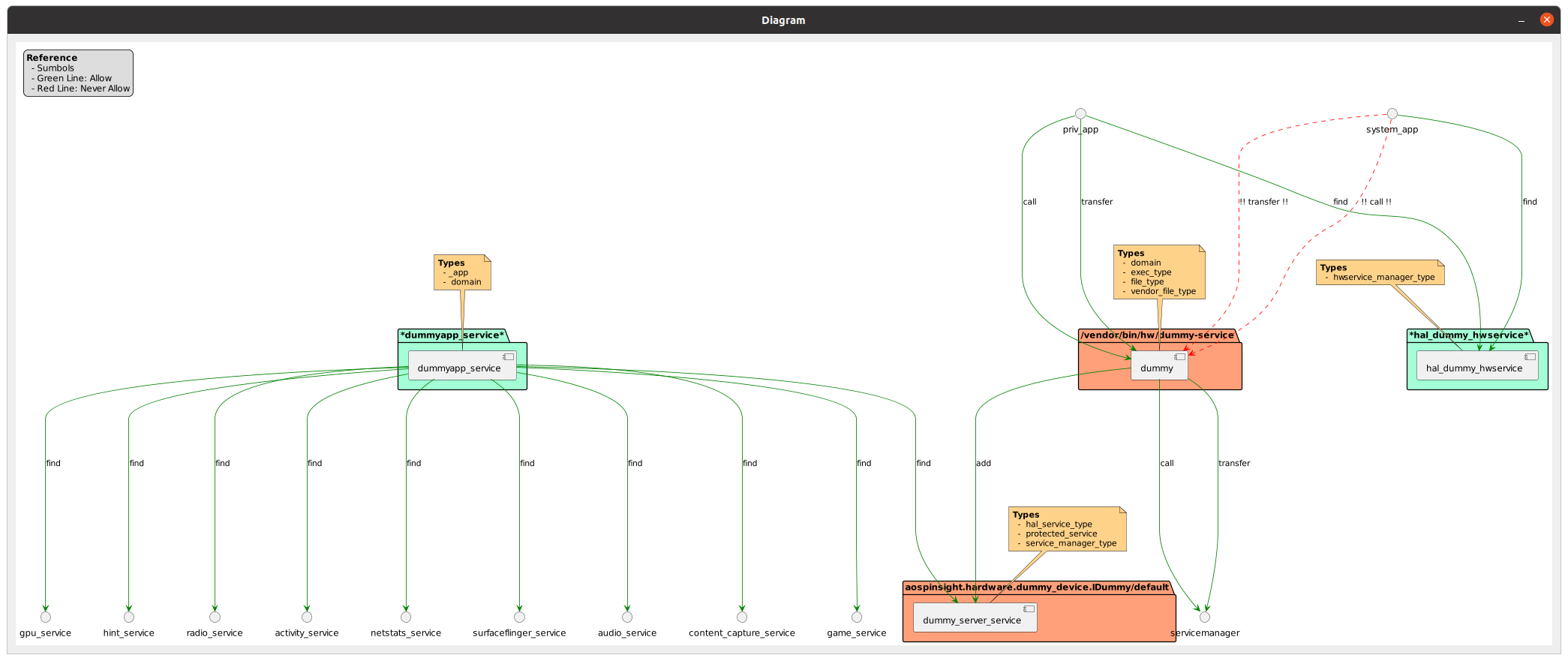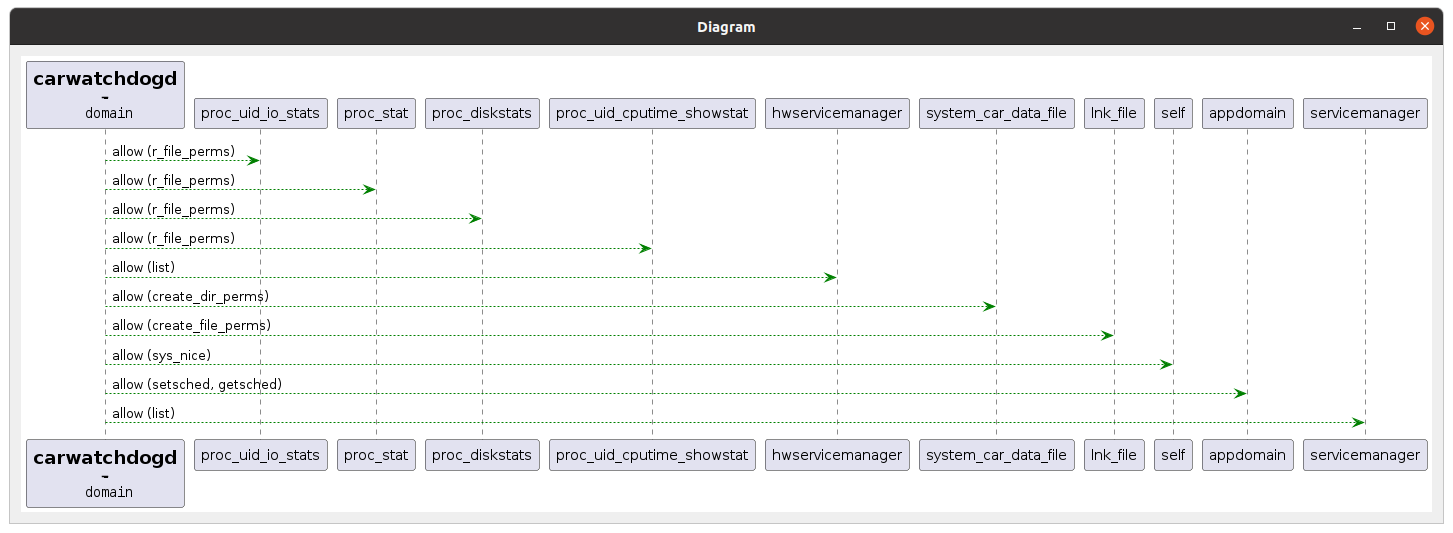SELinux Explorer is a utility designed to help developers explore and visualize SELinux policies, with a focus on Android SELinux at present. The project initially started as a command-line tool but has since evolved to include a graphical user interface (GUI) for better usability and to provide additional features such as filtering, generating custom output, and reusing data.
The tool supports the following file types:
file_contextsservice_contextsvndservice_contextshwservice_contextsproperty_contextsseapp_contexts*.te
Please note: The tool is a work in progress and might have some issues or require performance improvements. We welcome any bug reports, suggestions, or contributions.
- Threat assessment and cybersecurity analysis
- Identify potential vulnerabilities in policies
- Detect possible privilege escalation paths
- Android app development
- Debug and optimize SELinux policies for custom apps
- Verify proper policy configuration
- System administration
- Audit and review SELinux policies
- Improve system security and compliance
- Security research
- Analyze and understand complex policy structures
- Develop new security solutions and enhancements
- Documentation
To run SELinux Explorer, you need to have Python 3.x and some other packages installed on your local machine:
- Python 3.8 or newer
- PythonIsPython3
- Graphviz
- PyQt5
- Dataclass-wizard
- Dataclasses
./setup.sh
- Install Python 3.8 or a newer version, PythonIsPython3, Graphviz, and PyQt5:
sudo apt install python3.8 python-is-python3 graphviz python3-pyqt5 -y
- Install python packages
pip install -r requirements.txt
- Clone the project and its submodule:
git clone https://github.com/Heydarchi/SELinux-Explorer.git
- Inside the cloned folder, run the following command to update the submodule:
git submodule update --init --recursive
- Change to the
appdirectory:
cd app
- Run the main.py script:
python main.py
Thank you for your interest in contributing to SELinux Explorer! We welcome and appreciate any contributions, whether it's bug reports, feature requests, code, documentation, or testing. Please refer to our CONTRIBUTION.md file for detailed guidelines on how to set up your development environment, check code style, run tests, and submit your changes.
This project is under active development, and we're continuously working on improving and expanding its functionality. For a detailed list of features and tasks that we're planning to implement, please refer to the TODO List file. We welcome your contributions and feedback, so feel free
If you encounter any issues or bugs while using SELinux Explorer, we encourage you to report them, so we can address and fix them promptly. Please create a new issue using our Bug Report Template and provide all the necessary details to help us reproduce and understand the problem. Your feedback is invaluable in helping us maintain the tool's reliability and stability.
We're always looking to improve and expand the functionality of SELinux Explorer. If you have a suggestion for a new feature or an enhancement to an existing one, we'd love to hear from you. Please create a new issue using our Feature Request Template and provide a clear and concise description of your idea, including the problem it aims to solve and the benefits it would bring. Your input is essential in shaping the future development and direction of the project.
This project is released under the Apache 2.0 License.


